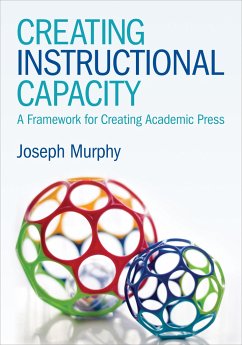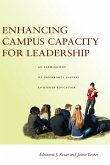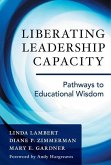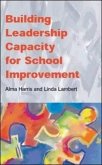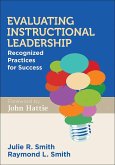- Broschiertes Buch
- Merkliste
- Auf die Merkliste
- Bewerten Bewerten
- Teilen
- Produkt teilen
- Produkterinnerung
- Produkterinnerung
This book covers "
Andere Kunden interessierten sich auch für
![Standards Reform in High-Poverty Schools: Managing Conflict and Building Capacity Standards Reform in High-Poverty Schools: Managing Conflict and Building Capacity]() Carol A. BarnesStandards Reform in High-Poverty Schools: Managing Conflict and Building Capacity28,99 €
Carol A. BarnesStandards Reform in High-Poverty Schools: Managing Conflict and Building Capacity28,99 €![Enhancing Campus Capacity for Leadership Enhancing Campus Capacity for Leadership]() Adrianna KezarEnhancing Campus Capacity for Leadership38,99 €
Adrianna KezarEnhancing Campus Capacity for Leadership38,99 €![Liberating Leadership Capacity Liberating Leadership Capacity]() Linda LambertLiberating Leadership Capacity35,99 €
Linda LambertLiberating Leadership Capacity35,99 €![Building Leadership Capacity for School Improvement Building Leadership Capacity for School Improvement]() Alma HarrisBuilding Leadership Capacity for School Improvement31,99 €
Alma HarrisBuilding Leadership Capacity for School Improvement31,99 €![Differentiated Instructional Strategies for Science, Grades K-8 Differentiated Instructional Strategies for Science, Grades K-8]() Gayle H GregoryDifferentiated Instructional Strategies for Science, Grades K-843,99 €
Gayle H GregoryDifferentiated Instructional Strategies for Science, Grades K-843,99 €![Evaluating Instructional Leadership Evaluating Instructional Leadership]() Julie Rae SmithEvaluating Instructional Leadership38,99 €
Julie Rae SmithEvaluating Instructional Leadership38,99 €![Factors That Affect the Granulation and Capacity in Grinding of Corn, Oats, and Sorghum Grain With a Hammermill Factors That Affect the Granulation and Capacity in Grinding of Corn, Oats, and Sorghum Grain With a Hammermill]() Richard James BakerFactors That Affect the Granulation and Capacity in Grinding of Corn, Oats, and Sorghum Grain With a Hammermill18,99 €
Richard James BakerFactors That Affect the Granulation and Capacity in Grinding of Corn, Oats, and Sorghum Grain With a Hammermill18,99 €-
-
-
This book covers "
Hinweis: Dieser Artikel kann nur an eine deutsche Lieferadresse ausgeliefert werden.
Hinweis: Dieser Artikel kann nur an eine deutsche Lieferadresse ausgeliefert werden.
Produktdetails
- Produktdetails
- Verlag: Sage Publications
- Seitenzahl: 184
- Erscheinungstermin: 12. November 2015
- Englisch
- Abmessung: 251mm x 175mm x 10mm
- Gewicht: 408g
- ISBN-13: 9781483374567
- ISBN-10: 1483374564
- Artikelnr.: 42858875
- Herstellerkennzeichnung
- Libri GmbH
- Europaallee 1
- 36244 Bad Hersfeld
- gpsr@libri.de
- Verlag: Sage Publications
- Seitenzahl: 184
- Erscheinungstermin: 12. November 2015
- Englisch
- Abmessung: 251mm x 175mm x 10mm
- Gewicht: 408g
- ISBN-13: 9781483374567
- ISBN-10: 1483374564
- Artikelnr.: 42858875
- Herstellerkennzeichnung
- Libri GmbH
- Europaallee 1
- 36244 Bad Hersfeld
- gpsr@libri.de
Joseph F. Murphy is the Frank W. Mayborn Chair and associate dean at Peabody College of Education at Vanderbilt University. He has also been a faculty member at the University of Illinois and The Ohio State University, where he was the William Ray Flesher Professor of Education. In the public schools, he has served as an administrator at the school, district, and state levels, including an appointment as the executive assistant to the chief deputy superintendent of public instruction in California. His most recent appointment was as the founding president of the Ohio Principals Leadership Academy. At the university level, he has served as department chair and associate dean. He is past vice president of the American Educational Research Association and was the founding chair of the Interstate School Leaders Licensure Consortium (ISLLC). He is co-editor of the AERA Handbook on Educational Administration (1999) and editor of the National Society for the Study of Education (NSSE) yearbook, The Educational Leadership Challenge (2002). His work is in the area of school improvement, with special emphasis on leadership and policy. He has authored or co-authored 18 books in this area and edited another 12. His most recent authored volumes include Understanding and Assessing the Charter School Movement (2002), Leadership for Literacy: Research-Based Practice, PreK-3 (2003), Connecting Teacher Leadership and School Improvement (2005), Preparing School Leaders: Defining a Research and Action Agenda (2006), and Turning Around Failing Schools: Lessons From the Organizational Sciences.
Preface
I. Understanding School Improvement
1. Shaping Forces
2. School Improvement: The Backstage Story
II. Leadership for School Improvement
3. Vision
4. School Culture and Academic Press
III. Building Instructional Capacity
5. Staffing, Time and Material Resources, and Support
6. Talent Development
IV. Leading the Curricular Program
7. School as Academic Place
8. Curriculum and Assessment
I. Understanding School Improvement
1. Shaping Forces
2. School Improvement: The Backstage Story
II. Leadership for School Improvement
3. Vision
4. School Culture and Academic Press
III. Building Instructional Capacity
5. Staffing, Time and Material Resources, and Support
6. Talent Development
IV. Leading the Curricular Program
7. School as Academic Place
8. Curriculum and Assessment
Preface
I. Understanding School Improvement
1. Shaping Forces
2. School Improvement: The Backstage Story
II. Leadership for School Improvement
3. Vision
4. School Culture and Academic Press
III. Building Instructional Capacity
5. Staffing, Time and Material Resources, and Support
6. Talent Development
IV. Leading the Curricular Program
7. School as Academic Place
8. Curriculum and Assessment
I. Understanding School Improvement
1. Shaping Forces
2. School Improvement: The Backstage Story
II. Leadership for School Improvement
3. Vision
4. School Culture and Academic Press
III. Building Instructional Capacity
5. Staffing, Time and Material Resources, and Support
6. Talent Development
IV. Leading the Curricular Program
7. School as Academic Place
8. Curriculum and Assessment

